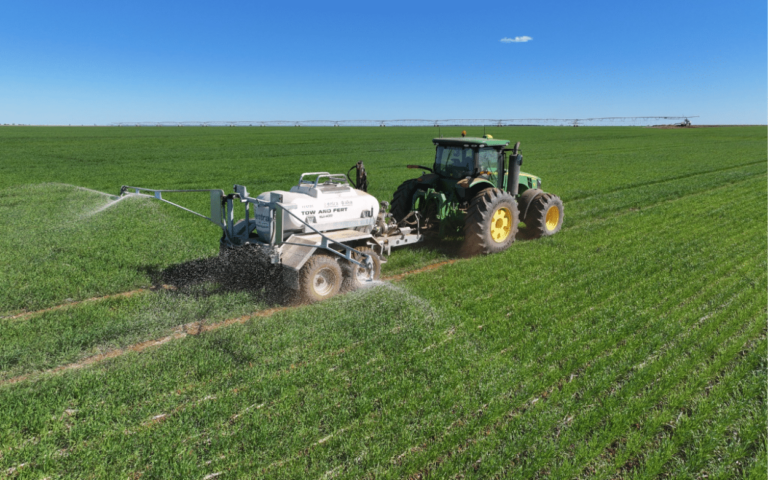To produce enough food for the world's population, expected to grow to 9 billion by 2050, agriculture will need to use chemical fertilizers. But as climate action dominates government discussions around the world, farmers are under enormous pressure to reduce their use of chemical fertilizers. fertilizer. Fortunately, several companies are exploring solutions to reduce the use of chemical fertilizers on farms while maintaining crop yields.
With the International Agricultural Expo currently taking place in Paris, we are focusing on technological solutions that combine climate change adaptation, reducing carbon emissions and increasing yields.
Nitrogen-based fertilizers are widely used in the agricultural industry, but their use and manufacturing processes are some of the largest contributors to greenhouse gas emissions.
As technology advances, farmers have a variety of options to reduce fertilizer use while maintaining crop yields. Also, several options are emerging for how to produce nitrogen without producing large amounts of emissions. We have selected two of his companies that have solutions for farmers in this direction.
Nitrogen from lightning due to nitrogen concentration
American startup Nitricity is conducting research to harness the power of lightning to produce nitrogen fertilizer using only air, water, and electricity.
Nitricity was founded in 2018 by a team of graduate students at Stanford University in California. Currently, Nicolas Pinkowski is CEO and Joshua McEnaney is his CTO. Jay Schwalbe will serve as his CSO. They have already successfully raised millions of dollars in several funding rounds. The company is currently expanding its technology to provide regional and climate-smart nitrate fertilizer production.
Nitrogen is a major element in the atmosphere, but its use as fertilizer requires a number of chemical processes.
The researchers found that during thunderstorms, lightning naturally breaks down nitrogen in the atmosphere, and subsequent rain transports the nitrogen to the soil as plant-soluble nitrates. The company then developed a nonthermal plasma reactor technology that uses electricity to generate artificial lightning and emulate the natural process of fixing nitrogen. This technology has already been successful in several trials.
Joshua McEnany said:
“This electric technology delivers fertilizer in the form of climate-friendly nitrates and is designed to be applied efficiently, going beyond ammonia-based technologies to address greenhouse gas emissions. This is an opportunity to attack not only 1-2% of global GHG emissions in production, but also an additional 5% of GHG emissions in applications, by mitigating the production of nitrous oxide.”
One of the trials was with the Salinas Valley farmers who supply Chipotle Mexican Grill. For Jack Hartung, Chipotle's chief financial and administrative officer, Nitricity's pursuit of product innovation offers environmental benefits that complement Chipotle's approach to wholesome food.
“Fertilizer prices have skyrocketed in recent years. supply chain issuesFossil fuel price volatility, an increase in distribution costs. Fertilizers offered by Nitricity not only have the potential to reduce the fertilizer industry's carbon footprint, but can also be a cost-effective solution for producers in the supply chain. ”
Tow-and-furt tech using metal foam
To help farmers reduce the amount of granular fertilizer they use, a New Zealand company metal formhas developed various machines to spread liquid fertilizer.

A machine called Tow and Fert, developed by Metalform, reduces overall granular fertilizer usage by dissolving granular fertilizer in water and applying it to crops.
The company has been developing fertilizer equipment since the 1970s, but in the late 2000s it noticed a trend in the application of particulate fertilizer across New Zealand farms. Metalform recognized the science around the efficiency of fine particles compared to large granules and decided to develop something that every farmer could own and use.
Tim Henman, International Sales Manager at Metalform, said:
“The advantage is in fertilizer efficiency. We have not reinvented the science, we have developed a tool that quickly dissolves urea in cold water. Efficiency) is much higher. Customers have been able to reduce nitrogen usage by up to 50% without compromising dry matter growth. Our machines keep insoluble particulate products in suspension; It applies without the blockages and problems that regular boom sprayers experience. You can also mix multiple products at the same time to reduce application passes. These include N, P, Contains K, S, humates, molasses, seeds, selective herbicides, and essential micronutrients.”
There are currently five machines in the Tow and Fert series, ranging from the Multi 500, designed for use on ATVs, to the Multi 4000, with a 4,000 liter capacity for larger farms.
Metalform is currently developing a larger machine with a working width of 36 meters for crop farmers.


